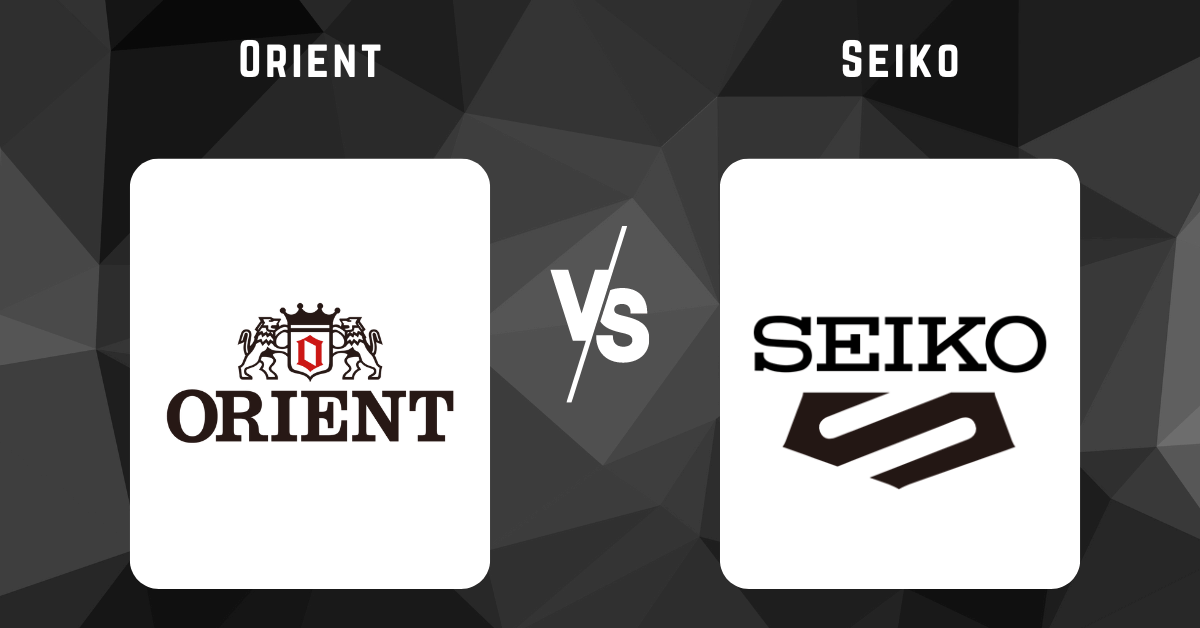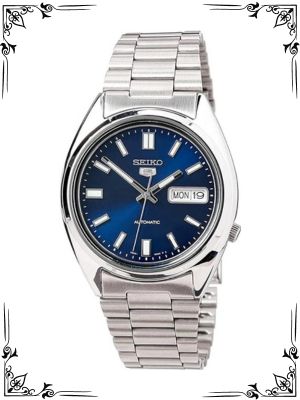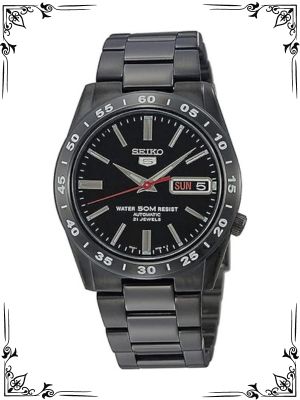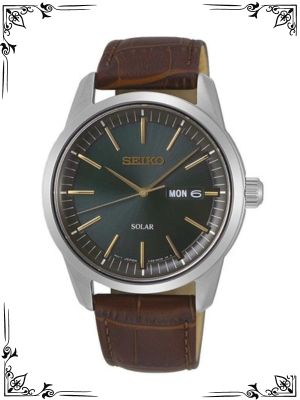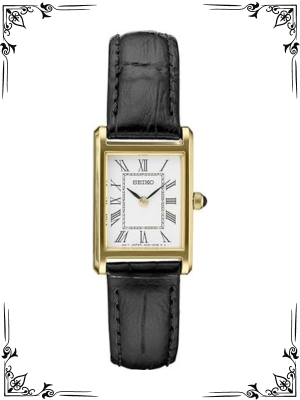Orient is Known for affordable mechanical watches with in-house movements, offering a wider range of dressy options and sometimes bolder designs. Seiko Offers a wider spectrum of price points, from budget-friendly to high-end luxury, with a reputation for technical innovation and a strong presence in the sports watch category.
Introduction
The world of mechanical watches boasts a plethora of esteemed brands, and navigating the options can feel like deciphering a complex dive chart. For budget-conscious watch enthusiasts seeking quality and style, two Japanese giants, Orient and Seiko, often rise to the surface.
Both brands have a rich history and offer a diverse range of timepieces, making the decision between them a delightful quandary. Fear not, intrepid watch explorer! This comprehensive guide will delve into the intricacies of Orient and Seiko, helping you choose the perfect watch to complement your style and budget.
Congratulations on setting your sights on a mechanical watch! Both Orient and Seiko represent exceptional choices, offering a compelling blend of affordability, functionality, and heritage. However, with their distinct strengths, choosing the right one requires a closer look.
This guide will dissect the technical specifications, design elements, and brand legacies of each brand, empowering you to make an informed decision and select the timepiece that perfectly suits your wrist and style.
History
Understanding a brand’s history adds depth to your appreciation for its timepieces. Here’s a glimpse into the illustrious pasts of Orient and Seiko:
Orient: Established in 1901, Orient boasts a long and intriguing history. Initially focusing on pocket watches and other instruments, they transitioned to wristwatches in the 1950s.
Orient is renowned for its in-house movement production, a commitment to affordability, and a diverse range of styles, catering to both casual and dressy preferences. The brand’s iconic models include the Mako diving watch and the Bambino dress watch.
Seiko: Founded in 1881, Seiko is a titan in the watchmaking industry. They’re credited with numerous innovations, including the world’s first commercially successful quartz watch in 1969. Seiko caters to a wide range of budgets, offering everything from entry-level automatics to high-end luxury timepieces.
The brand is particularly well-known for its sports watches, with iconic models like the Seiko 5 and the legendary Seiko Tuna Diver.
Technical Breakdown
Now, let’s get technical and explore the inner workings of these two esteemed watch brands:
Movement
| Feature | Orient | Seiko |
|---|---|---|
| Movement Type | Primarily automatic (some quartz models available) | Wider range of options (automatic, quartz, Spring Drive) |
| Caliber | In-house movements and some modified Miyota calibers | In-house movements, Seiko calibers based on external designs, and high-end Spring Drive movements |
| Accuracy | Typically -15/+25 seconds per day | Varies depending on the movement type (automatic movements typically have similar accuracy to Orient, Spring Drive offers exceptional accuracy) |
| Power Reserve | Typically 40-50 hours | Varies depending on the movement type (automatic movements typically offer a similar power reserve to Orient, Spring Drive boasts an extended power reserve) |
Key Points:
Orient: Orient prioritizes in-house movement production, offering a sense of ownership and potentially unique features compared to movements based on external designs. Their automatic movements typically exhibit accuracy within -15/+25 seconds per day and offer a power reserve of around 40-50 hours.
Seiko: Seiko offers a broader spectrum of movement types, including automatic, quartz, and their innovative Spring Drive technology.
Spring Drive movements combine the smooth sweeping secondhand of a quartz watch with the self-winding nature of an automatic, resulting in exceptional accuracy and a unique aesthetic. The accuracy and power reserve of Seiko’s movements vary depending on the specific caliber.
Materials and Construction
Both Orient and Seiko prioritize high-quality materials essential for a durable watch:
Stainless Steel: The primary case material, ensuring durability and corrosion resistance. Some higher-end models from both brands might utilize materials like titanium or sapphire crystal for the case.
Sapphire Crystal: Essential for scratch resistance and clear legibility. Some models, particularly at lower price points, might utilize mineral crystal, which is more prone to scratches.
Water Resistance: Varies depending on the model, with some dive watches offering water resistance up to 200 meters or more. Dress watches typically have lower water resistance ratings.
Key Material and Construction Differences
| Feature | Orient | Seiko |
|---|---|---|
| Case Material | Primarily stainless steel (some higher-end models in titanium or sapphire) | Primarily stainless steel (some higher-end models in titanium or sapphire) |
| Crystal | Sapphire Crystal (some models use mineral crystal) | Sapphire Crystal (some models use mineral crystal) |
| Water Resistance | Varies depending on the model (up to 200m+ for dive watches) | Varies depending on the model (up to 200m+ for dive watches) |
Key Points
Orient and Seiko: Both brands prioritize quality materials like stainless steel and sapphire crystal in their watches. However, some models, particularly at lower price points, might utilize mineral crystal, a more affordable option but more susceptible to scratches. Water resistance varies depending on the specific watch, with dive watches boasting superior water resistance compared to dress watches.
Functions and Features
Here’s where we delve into the functionalities offered by each watch brand:
| Feature | Orient | Seiko |
|---|---|---|
| Functionality Focus | Diverse (date, automatic winding, power reserve indicator on some models) | Wider range of functionalities (date, chronograph, GMT functions, additional complications on some models) |
| Bezel Options | Rotating bezels on some dive watches, typically stainless steel or aluminum | Rotating bezels on dive watches, various materials like stainless steel, ceramic, or even titanium on some models |
| Luminescence | Luminescent hands and markers for nighttime legibility | Luminescent hands and markers for nighttime legibility (Lumibrite on most Seiko models) |
Key Points
Orient: Orient offers a good range of functionalities beyond basic timekeeping. This includes features like date displays, automatic winding mechanisms, and even power reserve indicators on some models. However, compared to Seiko, their selection of complex functionalities might be slightly more limited.
Seiko: Seiko boasts a wider spectrum of functionalities, catering to the needs of diverse watch enthusiasts. Their offerings include chronographs for precise timekeeping, GMT functions for tracking multiple time zones, and even additional complications like moon phases or tachymeters on some high-end models.
Seiko’s dive watches often feature bezels made from various materials, with some models utilizing ceramic for superior scratch resistance. Both Orient and Seiko utilize luminescent materials on their hands and markers for nighttime legibility.
Design and Aesthetics
Let’s explore the visual aspects of these two compelling watch brands:
Dial Design
Orient: Orient dials offer a diverse range of styles, from classic and elegant to sporty and functional. They often incorporate unique design elements and textures, catering to a wider range of aesthetic preferences.
Seiko: Seiko dials tend to prioritize legibility and functionality, particularly in their sports watches. However, they also offer a good selection of dress watch dials with classic and timeless designs.
Case and Bracelet
Orient: Orient cases come in a variety of shapes and sizes, catering to different wrist sizes and styles. Their bracelets typically prioritize comfort and affordability, utilizing stainless steel or leather options.
Seiko: Seiko offers a wider range of case shapes and sizes, with some models featuring iconic designs like the cushion-shaped case of the Seiko 5 Sports. Their bracelets cater to various preferences, with options ranging from sporty stainless steel to comfortable leather straps.
Brand Image
Orient: Orient is known for its excellent value proposition, offering in-house mechanical movements at accessible price points. They cater to a wider range of aesthetic preferences with their diverse dial designs.
Seiko: Seiko has a more established brand image, recognized for its rich history of innovation and a wider spectrum of price points. They are particularly well-known for their sports watches and cater to enthusiasts seeking functionality and technical prowess.
Here’s a table summarizing the key design aspects:
| Feature | Orient | Seiko |
|---|---|---|
| Dial Design | Diverse (classic, sporty, unique elements and textures) | Functional and legible (classic and timeless options available) |
| Case and Bracelet | Variety of shapes and sizes, focus on comfort and affordability | A Wider range of shapes and sizes, iconic designs on some models, diverse bracelet options |
| Brand Image | Excellent value proposition, accessible mechanical movements, diverse aesthetics | Established brand, rich history, wider price range, renowned for sports watches and technical innovation |
Key Points:
Orient: If you prioritize a unique or interesting dial design and value for your money, Orient offers a compelling selection. Their cases come in various styles and sizes, and their bracelets ensure comfort without breaking the bank.
Seiko: Seiko caters to those seeking a balance of functionality and classic aesthetics. Their iconic case designs and a wider range of bracelet options allow for more customization based on your style preference. The brand image associated with Seiko might hold more weight for some watch enthusiasts who value heritage and innovation.
Ultimately, the design choice depends on your personal preference. Do you seek a watch with a distinct and eye-catching dial design (Orient), or are you drawn to the clean functionality and potentially iconic design elements offered by Seiko?
User Feedback
Here’s a glimpse into what watch enthusiasts have to say about Orient and Seiko:
Orient Fans:
- Appreciating the unique aesthetics: Orient wearers enjoy the brand’s diverse dial designs and the ability to find a watch that expresses their individuality.
- Excellent value for the price: The affordability of Orient’s in-house mechanical movements is a major draw for many enthusiasts.
Seiko Fans:
- Legendary brand reputation: Seiko’s rich history and association with innovation resonate with many watch enthusiasts.
- Wide range of options: The sheer variety of styles, functionalities, and price points offered by Seiko allows enthusiasts to find a perfect fit.
Both Orient and Seiko receive positive user feedback. Orient appeals to those who prioritize affordability and unique aesthetics, while Seiko finds favor with enthusiasts who value heritage, functionality, and a wider selection.
Common Problems
Orient:
- Limited brand recognition: Compared to Seiko, Orient might not have the same level of brand awareness, potentially impacting resale value.
- Quality control concerns: While generally reliable, some users report occasional quality control issues with Orient watches.
- Limited availability of high-end models: Orient’s focus on affordability might limit the availability of luxury materials or complex functionalities in its collections.
Seiko:
- The higher price range for some models: Seiko’s more advanced features and high-end models can come at a steeper price point compared to Orient.
- Inconsistent design aesthetics: Seiko’s vast range of styles might lead to some inconsistencies in design language across their collections.
- Seiko 5 “desk diving” reputation: The Seiko 5 series, known for its affordability and durability, can sometimes be perceived as lacking the true technical specifications of a professional dive watch.
Here’s a table summarizing the potential concerns:
| Feature | Orient | Seiko |
|---|---|---|
| Brand Recognition | Lower | Higher |
| Quality Control | Potential concerns reported by some users | Generally reliable |
| Availability of High-End Options | Limited | Wider range available |
| Price Point | Generally affordable | Wider range, with some models at a higher price point |
| Design Consistency | Diverse styles | Inconsistency in design language across some collections |
| “Desk Diving” Perception (Seiko 5) | Might be perceived as not a true dive watch | N/A |
Key Points:
- Brand Recognition: Consider how important brand image is to you. If resale value is a concern, Seiko’s established name might hold an advantage.
- Quality Control: While generally reliable, be mindful of potential quality control issues reported with some Orient models.
- Availability and Price: If you prioritize affordability and unique aesthetics, Orient offers a compelling selection. For a wider range of high-end options or advanced features, Seiko caters to those willing to invest a bit more.
- Design and Functionality: Evaluate your priorities. Do you seek a watch with a distinct design (Orient), or are you drawn to the wider range of functionalities offered by Seiko? Consider the “desk diving” perception associated with the Seiko 5 series if you’re looking for a true professional dive watch.
The Final Lap
The Orient Champion:
- You prioritize affordability and value for your money.
- You appreciate unique and interesting dial designs that express your individuality.
- You’re comfortable with a brand that might have slightly lower brand recognition compared to Seiko.
- You don’t require a vast array of complex functionalities and are happy with basic features like date and automatic winding.
The Seiko Champion:
- You value a rich brand history and reputation for innovation.
- You seek a wider range of functionalities, including chronographs, GMT functions, and potentially even additional complications.
- You appreciate the iconic design elements associated with some Seiko models.
- You’re willing to invest a bit more for a watch with potentially higher resale value due to brand recognition.
Conclusion
The quest for the perfect watch doesn’t have to be an odyssey fraught with indecision. By understanding the strengths and considerations of both Orient and Seiko, you can navigate your decision with confidence.
Embrace the affordability and unique aesthetics of the Orient, or delve into the rich heritage and technical prowess of Seiko. The ultimate choice rests with you, and whichever path you choose, you’ll be acquiring a timepiece built with quality and imbued with a legacy of excellence.
Here are some additional factors to ponder as you make your final decision:
- Try the watches on! The feel and weight of a watch on your wrist can significantly influence your decision. Visit a reputable watch retailer and try on both the Orient and Seiko models to see which one feels more comfortable and stylish on you.
- Consider your lifestyle. Do you need a watch for everyday wear, or do you require a more robust timepiece for specific activities like diving? Orient and Seiko offer options for both casual and sporty lifestyles.
- Long-term value. While resale value might not be your top priority, consider how well the watch might hold its value over time. Seiko’s established brand name might give it a slight edge in this regard.
Ultimately, the most important factor is to choose a watch that you love and that brings you joy. Whether it’s the distinct personality of Orient or the rich heritage of Seiko, both brands offer exceptional value and a gateway into the fascinating world of mechanical timekeeping. Happy watch hunting!
FAQs
1. Which brand is more accurate?
Both Orient and Seiko automatic movements typically exhibit accuracy within -15/+25 seconds per day. Seiko’s high-end Spring Drive movements boast exceptional accuracy. However, real-world accuracy can vary depending on how you wear the watch.
2. Are Orient watches good for everyday wear?
Absolutely! Orient watches are generally reliable and comfortable for everyday wear. Their diverse range of styles ensures you can find a watch that complements your outfit and personal aesthetic.
3. Where can I buy an Orient or Seiko watch?
For the best selection and to ensure authenticity, purchase your watch from an authorized dealer. You can find authorized retailers for both brands by visiting their respective websites:
- Orient: https://www.orientwatchusa.com/
- Seiko: https://seikousa.com/
4. Can I customize my Orient or Seiko watch?
Customization options for these watches are generally limited. While some authorized dealers might offer aftermarket straps, extensive modifications are typically not available.
5. Is it better to buy a new or used Orient or Seiko watch?
This depends on your budget and comfort level. New watches come with a warranty and ensure you’re getting a genuine product. Used watches can be a great way to save money, but be sure to purchase from a reputable seller and have the watch inspected by a qualified watchmaker.
By considering the information presented in this comprehensive guide, you’re well-equipped to embark on your watch-buying journey and select the perfect timepiece from the esteemed brands of Orient and Seiko. May your new watch become a cherished companion for years to come!

